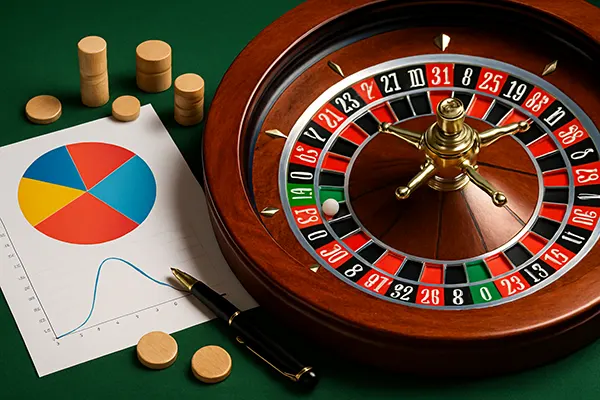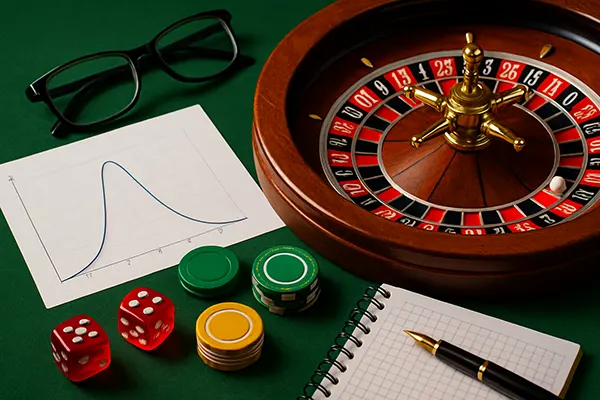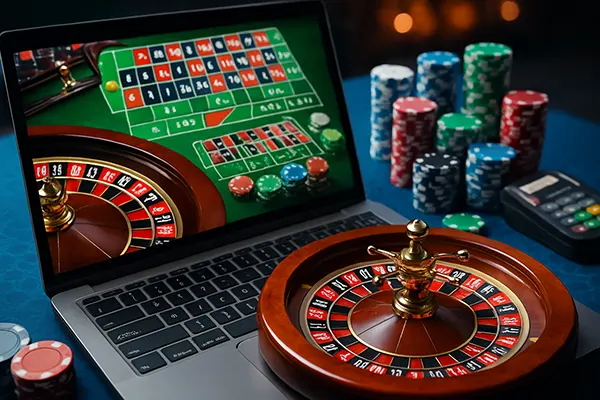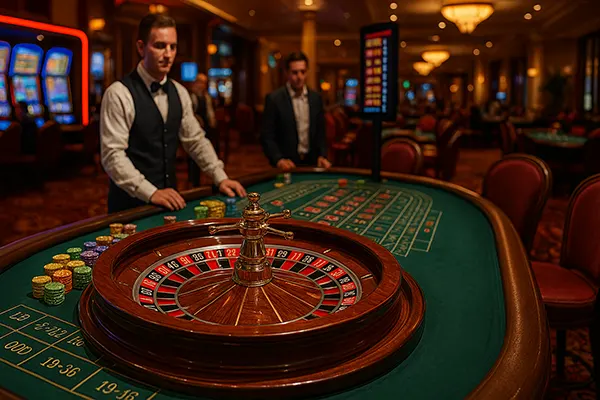
Mathematical Models of Roulette: Choosing a Strategy Based on Statistics
Roulette remains one of the most captivating casino games, combining simplicity with the excitement of chance. However, beyond the spinning wheel and bouncing ball lies a world of mathematical analysis that can guide players towards smarter decisions. Understanding statistical models is key to developing strategies that are both realistic and well-informed.
Understanding Roulette Probability and House Edge
Every roulette wheel is designed with specific probabilities that define the game’s house edge. In European roulette, the house edge stands at approximately 2.7%, while in American roulette, it is higher at about 5.26% due to the extra double zero pocket. This built-in advantage ensures that, over time, the casino will always maintain a profit.
Players should acknowledge that no strategy can eliminate the house edge entirely. Nonetheless, statistical awareness can help in selecting betting systems that optimise the chances within the boundaries set by probability. The more a player understands these mechanics, the better they can manage expectations and outcomes.
Additionally, it is important to remember that each spin is independent. Past results do not influence future outcomes, making systems based purely on streaks, like the Gambler’s Fallacy, unreliable in the long term.
Popular Mathematical Approaches to Managing Bets
The Martingale system is one of the most recognised betting strategies based on mathematics. It suggests doubling the bet after every loss to recover previous losses and gain a profit equal to the original bet once a win occurs. While theoretically sound, it requires a large bankroll and can be restricted by table limits.
Another notable model is the Fibonacci sequence, where each bet amount is the sum of the two previous ones. It is perceived as less aggressive than the Martingale, reducing the risk of exhausting funds quickly, although the losses can still accumulate over time.
The D’Alembert strategy provides a more conservative method. Here, players increase their bet by one unit after a loss and decrease it by one after a win. This approach attempts to balance losses and wins in a steadier progression compared to aggressive doubling systems.
Statistical Modelling in Modern Roulette Play
In contemporary settings, players and researchers often apply statistical simulations to better understand roulette outcomes. By simulating thousands or even millions of spins, analysts can verify the effectiveness of various strategies and identify patterns that might not be apparent through casual play.
However, even complex models affirm that the house edge remains undefeated in the long term. Simulations reinforce the principle that roulette is a game of negative expected value for the player. Despite this, statistical tools provide valuable insights into risk management and short-term betting behaviour.
Players increasingly use software to track their sessions, recording wins, losses, and streaks to refine their strategies over time. Although this meticulous data gathering does not guarantee success, it contributes to more disciplined and educated betting habits.
The Role of Random Number Generators in Online Roulette
When playing online roulette, Random Number Generators (RNGs) are responsible for the outcomes instead of a physical wheel. RNGs are algorithms that generate sequences of numbers without any predictable pattern, simulating the randomness of a real roulette wheel.
Properly certified RNGs are independently tested to ensure fairness, making them a trustworthy digital equivalent of mechanical wheels. Understanding this mechanism assures players that online games are not rigged, provided they are hosted by reputable operators.
Nevertheless, the fundamental statistics of roulette remain unchanged, whether in physical or digital form. Strategies based on the laws of probability apply equally to both formats, underscoring the universal relevance of mathematical approaches.

Choosing a Roulette Strategy Based on Statistical Insights
When selecting a strategy, players should first evaluate their own risk tolerance and bankroll. Aggressive models like Martingale require deep reserves, whereas systems like D’Alembert or Fibonacci offer less volatile paths, albeit with potentially slower recovery from losses.
Statistical awareness encourages the selection of strategies that match individual gaming styles. Flat betting, where the player bets the same amount each round, is statistically the most sustainable over time but may lack the thrill sought by more adventurous players.
Crucially, the best use of statistical knowledge is not to pursue guaranteed wins but to manage gameplay more intelligently. By embracing the realities of probability, players can enjoy roulette while preserving their bankroll for longer sessions.
Setting Realistic Expectations in Roulette Play
One of the most important lessons from statistical analysis is the necessity of realistic expectations. No system can assure consistent profits in roulette. The game’s design inherently favours the house, and variance will always play a role in short-term outcomes.
Approaching roulette as entertainment, rather than a profit-making venture, aligns with both the mathematical realities and responsible gambling practices. Strategies can enhance enjoyment and control but should never be mistaken for foolproof methods of beating the odds.
Ultimately, success in roulette should be measured by the longevity and enjoyment of play, rather than by an unrealistic pursuit of consistent winnings. A disciplined, statistically informed approach ensures a rewarding experience regardless of the final result.





